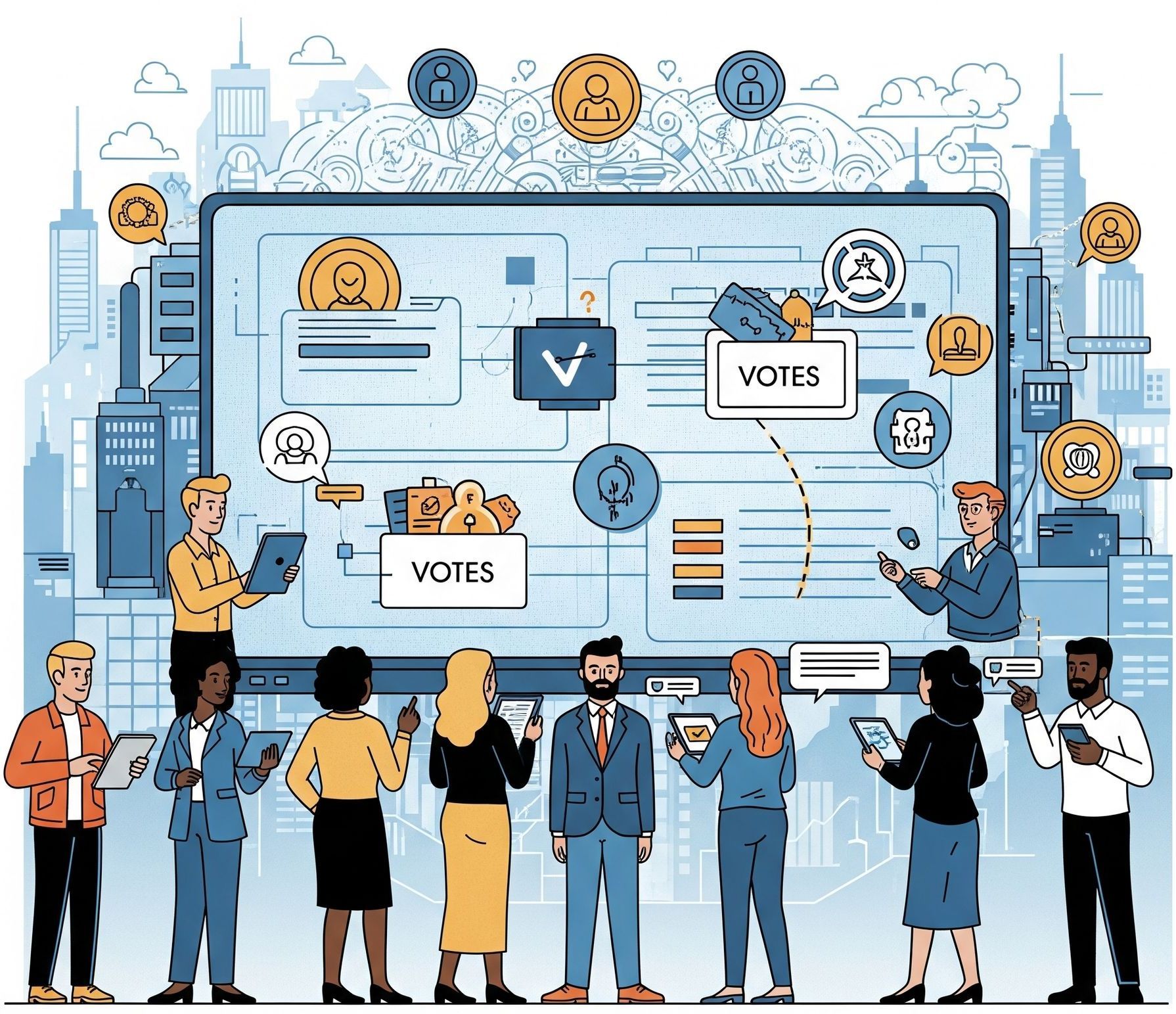The Good, the Bad and the Unintended Consequences of the ESG Promises
Bringing sustainability into strategic and tactical decision making has pushed us to take a hard look at what we do, why and how we do it, within a context that goes beyond an organization’s own boundaries. Institutional investors’ quest for better governance seems legitimate and the merits of investors’ push for improved corporate behaviour and accountability is hardly disputable.
But what’s in it for smaller players, including retail investors, the ultimate beneficial investors, or small and mid-sized businesses, who seem to have been left out of the discussions?
Let's explore the good, the bad and some of the unintended consequences of our battle for sustainability in business.

As long-term investors, we seek out companies that can clearly address three essential questions:
- Who are you?
Demonstrate transparency by openly sharing your identity, values, and business model. - Where are you headed?
Articulate a clear vision and purpose, outlining your strategic goals and long-term direction. - Who will be affected along the way?
Identify and communicate the positive and negative impacts your actions may have on stakeholders, society, and the environment.
By providing thoughtful answers to these questions, companies show a commitment to openness, purposeful leadership, and responsible growth—qualities we value in our investment decisions.
Expectations have evolved and we aim at providing capital to corporations that not only do what is legally required, and what is socially acceptable but also what is ethically right when pursuing value maximization.
Institutional investors’ quest for better governance seems legitimate and the merits of investors’ push for improved corporate behavior and accountability is hardly disputable. But what’s in it for smaller players, including retail investors, the ultimate beneficial investors, or small and mid-sized businesses, who seem to have been left out of the discussions?
The Good
- Opens dialogue between stakeholders allowing for a better knowledge of each other’s’ realities;
- Forces a redefinition of the fiduciary duty of both boards and institutional investors;
- Increases awareness, supports advocacy and promotes active voting for more transparency;
- Puts a price on negative externalities and surfaces the value of positive externalities in strategic
- capital allocation decision processes;
- Encourages more “balanced” CSR reporting, bringing “good” companies into the spotlight, not just “bad” companies, hence allowing for asset managers to better include extra-financial information into their investment decision process;
- Shifts discussions towards longer-term value creation, away from the traditional quarterly performance, inside both corporations and asset managers, as well as between them;
- Creates new opportunities by expanding an organization’s operating boundaries via the integration of other stakeholders’ views, in both the private and public sectors;
- Advances finance and economics education (provided by professional associations such as CFA, CPA, and academic institutions) by collapsing artificial barriers between all spheres of human activities and teaching the interconnectedness of our actions, with better integration extrafinancial information.
The Bad
- Allows for greenwashing by companies reticent to evolve the way they operate, or want to “buy time”, resulting in inflows going to “box-checking” and “best at marketing” asset managers;
- Political correctness imperatives to be at the forefront of ESG, both on the corporate and the investor side
- Adds another dimension to investing and increases the interaction complexity between stakeholders, resulting in accountability and transparency rather than alignment and simplicity;
- Promotes a “one-size fits all” approach to governance, providing free riding to box-checking organizations “gaming” the system by favoring the rule over the intention;
- Significantly increases the amount of resources companies and investors must dedicate to address sometimes conflicting demands and rising expectations from its various stakeholders, from proxy access right, public consultations, shareholder engagement initiatives, or the everincreasing number of surveys and reporting requirements;
- Brings to light the horizon mismatch between various stakeholders, with decisions lying in the hands of the most powerful ones and reconciling these conflicting messages has proven challenging for many organizations;
- Creates a disconnect between increasingly stringent voting guidelines issued by proxy advisory firms, and followed by many institutional investors, who are sometimes losing sight of the original intention, penalizing companies that have developed a corporate culture that already goes well beyond what proxy firms are aiming at.
... And the Unintended Consequences
- The adverse impact of disclosure policy on executive compensation: Increasing rather than decrease in executive compensation following the implementation of “say-on-pay” under the Dodd-Frank Act in the US. The median CEO compensation grew at a rate of +4.8% between 2011 (pre "say-on-pay") and 2017 and the average compensation increased at a rate of +6.3% during the same period. Other factors, of course, have influenced the overall compensation, including the impact of the strong performance of the S&P 500 on the stock-based portion of compensation, as well as the turnover of CEOs, as it has been shown that external CEOs tend to have a higher level of compensation versus CEOs promoted from within.
- Suboptimal board renewal and other governance structure policies: Suboptimal board turnover following the adoption of directors term/age limits, with the potential loss of key directors during a strategic corporate transition. Once a company graduates into the 30% club (30% female representation), no more questions are asked, and often, discussions on board effectiveness, the real intention of pushing for more diversity, are removed from shareholders’ engagement agendas.
- Institutionalization of capital markets: Significant voting power of passive and index institutional investors, especially in midcap companies. As of the end of June 2019, the top 5 shareholders, all large institutional and mostly passive investors, controlled on average 31% of the shares of US regional banks. The consequences of the institutionalization of capital markets are far-reaching, as it has been shown to result in slower market growth and will further decrease reliance on capital markets for efficient capital allocation.
- Increasing the public stance of newly empowered groups: proxy voting firms and global passive investors have now the means (ownership) and the will (genuine or not) to significantly impact voting decisions. With limited resources and the need for differentiation, only major issues at largest companies are typically considered. This bias towards actions with the most visible impact could result in short-term oriented and disruptive voting decisions to maintain one's “political correctness” perception.
- Diversion of financial capital away from small and mid-cap companies operating in vilified sectors and who rely on capital markets, to producers operating in regions with different environmental, social, and human rights standards and track records. Depriving small companies of the capital they need to be part of the transition toward a low-carbon economy may not fully support what we ultimately want to achieve.
The trend towards sustainable and responsible investing has, indisputably, reached a point of no return. What we decide to bring to the fore will dictate our path forward. As investors, casting our votes on behalf of our unitholders during the next proxy season, should we choose to do so, will shape the businesses of tomorrow. We should not take it lightly. To paraphrase one of Jean-Paul Sartre famous citations: "Every word (vote) has consequences, every silence (abstain) too".
Disclaimer:
This article is for informational purposes only and does not constitute investment advice. Borealis GAM may be invested in the securities of companies mentioned herein, creating a potential conflict of interest. While we strive for objective analysis, this should be considered. Past performance is not indicative of future results, and all investments carry risk, including loss of principal. Consult a financial advisor before making investment decisions. The information provided is based on our opinions and current holdings, which are subject to change without notice, and we make no warranties as to its accuracy or completeness.







